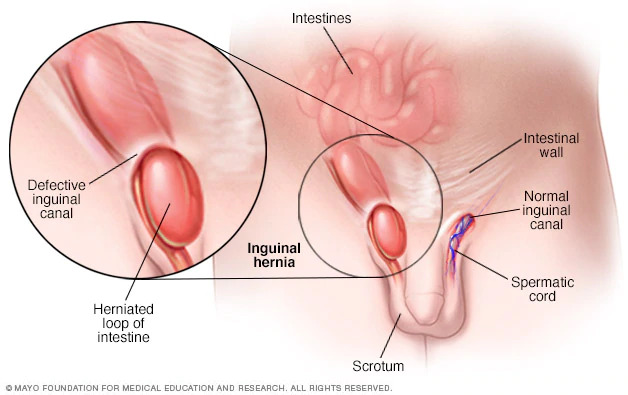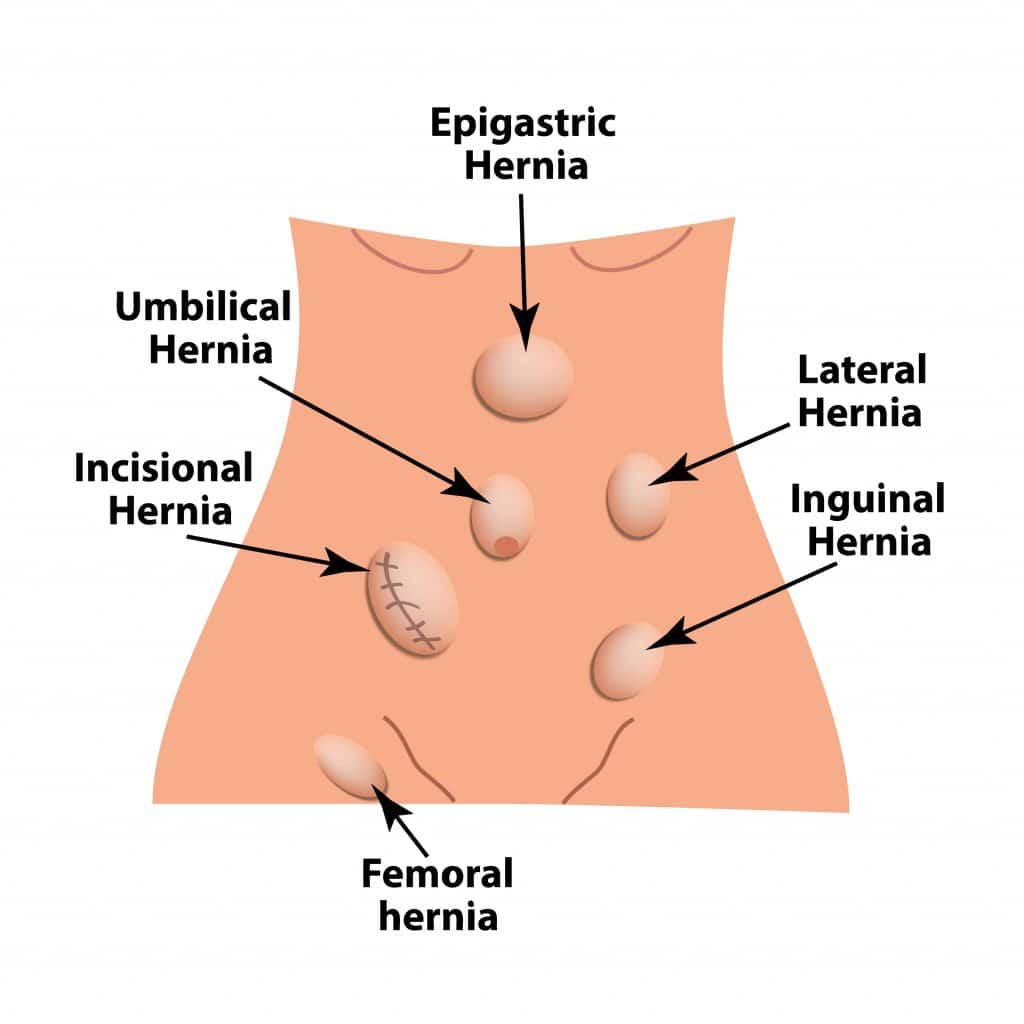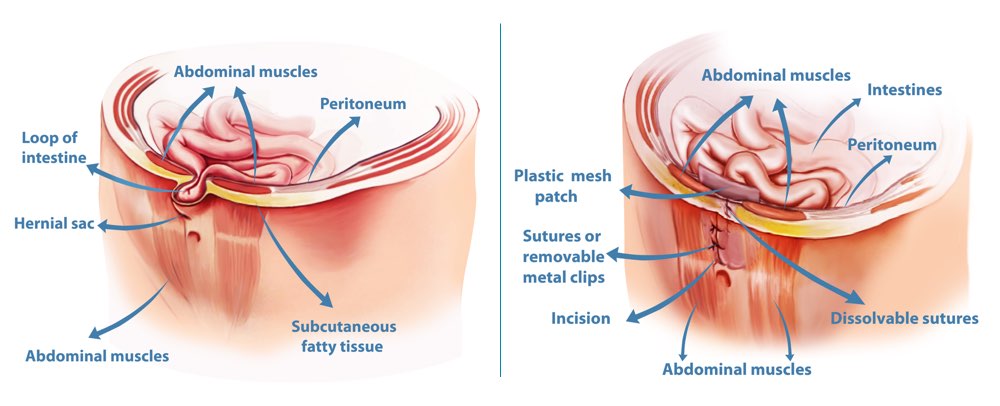About Hernias: Meaning & Definition
Hernia meaning: The word ‘Hernia” comes from the Latin: hernia “rupture”, related to hira “intestine’. Interestingly enough, the word is often misspelt, and “hernis” seems to be a very common search word on the web.
Hernia definition: A hernia is the protrusion of a viscus through the wall of the cavity that contains it. Most common hernias are abdominal wall hernias: inguinal, femoral, umbilical, paraumbilical, epigastric, spigelian, lumbar, obturator and incisional hernias.

What Is An Inguinal Hernia?
What Are The Causes of Hernia?
A general structural tissue abnormality leading to weakness has been shown in people with hernias. However, contributing factors are chronic increases of abdominal pressure (heavy lifting, chronic cough, constipation with straining, etc.
What are the hernia symptoms?
Pain and discomfort and the presence of a swelling more obvious with increase of abdominal pressure (coughing, sneezing, straining) are the most common symptoms. The discomfort usually worsens during the day and subsides when resting or lying down. A swelling that becomes hard and unable to be pushed back in or increasing pain radiating to other parts of the abdomen are worrisome signs of incarceration or strangulation that require emergency treatment.

How are Hernias Diagnosed?

How are Hernias Repaired?
Free Consultation for Hernias
A proctology service in Dubai and Abu Dhabi not only for Hernia Treatments, but also for many other diseases is currently operating in Dubai London Hospital, Aster Hospital, American Hospital. Currently, Dr. Antonio Privitera is offering a free consultation for hernias in the same hospital in Dubai and Abu Dhabi.
